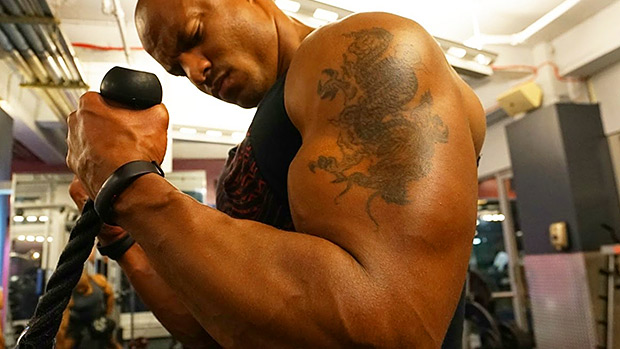The vast majority of lifters blast through their workouts without even thinking about rest intervals. No doubt they want you to think they're serious about their workouts, that they're no-nonsense CrossFitty types of guys, or that they're busy people who've no time for lollygagging because they've got a one o'clock with the Willoughby Corp. fleece-lined underwear people.
Even serious lifters often give little thought to rest intervals. They know that rest and intensity are inversely related. As such, they probably pitched their rest tent in one of two camps, adopting either the classic but definitely stale bodybuilding method of medium reps and 45 seconds between sets, or the similarly classic strength-building method of low reps and 2 to 3 minutes between sets.
They're all missing out, though. Experimenting with novel rep and rest periods can be as rewarding as experimenting with new exercises or programs. Case in point, researchers Fink, Kikuchi, and Nakazato found that when it comes to arm training, 20-rep sets with very short rest periods beats the more common 8-rep sets with 3 minutes rest by a long shot.
What They Did
The investigators recruited 20 experienced lifters. All of them performed 3 sets of each of the following exercises 3 times a week for 8 weeks:
- Barbell Curl
- Preacher Curl
- Hammer Curl
- Close-Grip Bench Press
- Overhead Barbell Triceps Extension
- Dumbbell Extension
Each exercise was performed to failure using a 201 tempo (2 seconds to lower the bar, zero second pause, and 1 second to lift the weight). That's where the similarities ended, though.
The first group used their 20RM (the most weight they could lift for 20 reps) and only rested 30 seconds between sets. The other group used their 8RM and rested 3 minutes between sets.
Once a lifter was able to lift more than 20 reps or more than 8 reps, the researchers increased the weight by 10%.
So What Did They Find?
The researchers measured muscle thickness right after the initial bout of training and found that the high-rep, short-rest guys had an increase in muscle thickness that was almost twice that of the low-rep, long-rest guys.
Both groups, however, experienced significant increases in the cross-sectional area of their arms after 8 weeks, but again, the high-rep, short-rest group doubled the results of the competing group. The high-rep group did, however, experience a slight decrease in strength, but it didn't approach statistical significance.
The team synopsized the study in this way:
"We conclude that short rest combined with low-load training might induce a high amount of metabolic stress ultimately leading to improved muscle hypertrophy while long rest with high-load training might lead to superior strength increases."
How to Use This Info
The findings of this study might tempt you to scrap your entire program and turn into a high repper, but it would be a mistake. For one thing, we don't know if it would work with other, larger body parts like chest, back, or legs.
Secondly, the high-rep, short rest thing might have just served as a novel training experience, thus spurring new growth the way any new training program or rep scheme might.
A logical response to this study would be to 1) try it with arms, but 2) more importantly, realize that adopting a periodization scheme where you juggle periods of low-rep, long-rest periods with high-rep, short-rest periods might be pretty damn fruitful in general.
Lastly, this study might convince you that sets of around 20 reps, while rarely seen because of "fear of being seen with puny weights syndrome," can occasionally work really well.
Source
- Fink J1, Kikuchi N2, Nakazato K1. "Effects of rest intervals and training loads on metabolic stress and muscle hypertrophy." Clin Physiol Funct Imaging, 2018 Mar;38(2):261-268. Epub 2016 Dec 28.






